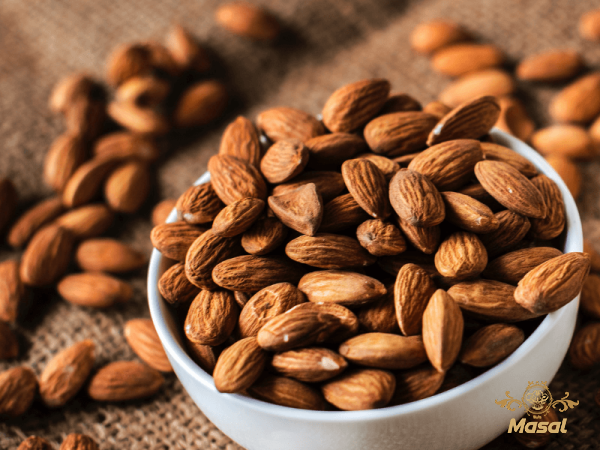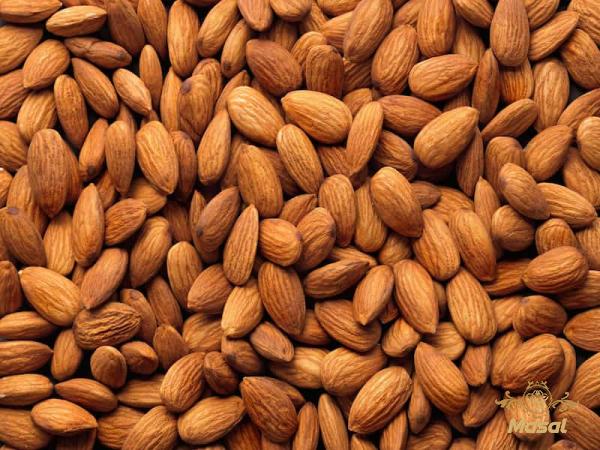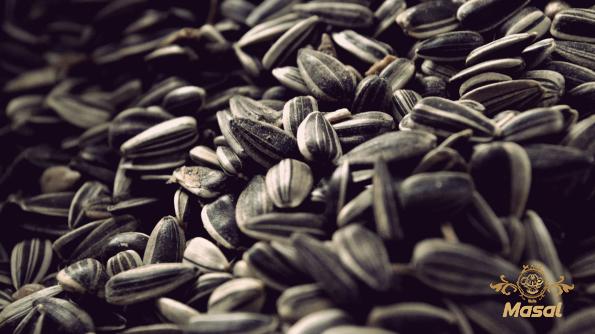Almonds are highly regarded for their numerous health benefits and are considered a nutrient-dense snack. They can be enjoyed in various forms, but two commonly debated options are roasted and raw almonds. This article aims to provide a comprehensive comparison between roasted and raw almonds, focusing on their nutritional content, potential health benefits, and any associated drawbacks. Nutritional Content: 1. Calories and Macronutrients: – Both roasted and raw almonds have a similar caloric content, with around 160-170 calories per ounce. – Almonds are a good source of healthy fats, providing monounsaturated fats, polyunsaturated fats, and a moderate amount of saturated fats. – Both roasted and raw almonds contain a significant amount of protein, fiber, and carbohydrates, with raw almonds having a slightly higher fiber content. 2. Vitamin and Mineral Content: – Almonds, whether roasted or raw, are rich in vitamin E, which acts as an antioxidant and helps protect cells from damage caused by free radicals. – Both types of almonds are good sources of magnesium, which plays a crucial role in various bodily functions, including muscle function and blood sugar control. – Raw almonds have slightly higher levels of B-vitamins, such as riboflavin, niacin, and folate, due to the heat-sensitive nature of these vitamins that may be partially lost during the roasting process. Potential Health Benefits: 1. Heart Health: – Both roasted and raw almonds are beneficial for heart health due to their high content of monounsaturated fats, fiber, and antioxidants. – Regular almond consumption has been associated with lowered LDL cholesterol levels, reduced risk of heart disease, and improved overall cardiovascular health. 2. Blood Sugar Control: – Almonds, regardless of whether they are roasted or raw, have a low glycemic index, meaning they have a minimal impact on blood sugar levels.

nut
 – The combination of healthy fats, fiber, and protein in almonds supports improved blood sugar control, making them suitable for individuals with diabetes or those concerned about blood sugar management. 3. Weight Management: – Almonds, in moderation, can be beneficial for weight management due to their satiating properties. – The high fiber and protein content in almonds promote feelings of fullness, reducing overall calorie intake. – However, it is important to consider portion sizes as the caloric content of almonds can contribute to weight gain if consumed excessively. Drawbacks and Considerations: 1. Roasting Process: – The roasting process can slightly alter the nutritional composition of almonds. Roasted almonds may have a slightly lower vitamin content, particularly heat-sensitive vitamins like B-vitamins. – Some roasted almonds may also undergo additional processes like seasoning or coating, which can increase their calorie and sodium content, potentially affecting their health benefits. – Dry-roasting almonds without added oils or seasonings is a healthier roasting option compared to those with added fats or sugars. 2. Allergies and Digestive Issues: – Almonds are a common allergen, and some individuals may experience allergic reactions or digestive issues when consuming them, regardless of whether they are roasted or raw. – Roasting almonds may enhance their digestibility for some individuals, as the roasting process can break down certain proteins that can be harder to digest in their raw form. Conclusion: Both roasted and raw almonds have their unique benefits and considerations. From a nutritional standpoint, raw almonds contain slightly higher levels of heat-sensitive vitamins, while roasted almonds may have a more pleasant taste and enhanced digestibility for some individuals. When considering potential health benefits, both options provide similar advantages, including heart health benefits, blood sugar control support, and weight management aid. It is important to be mindful of portion sizes and avoid highly-seasoned or sugar-coated roasted almonds to maximize the nutritional benefits. Ultimately, the choice between roasted and raw almonds depends on personal preference and individual dietary needs and restrictions. Roasted Almonds vs. Raw Almonds: A Nutritional Comparison Introduction: Almonds are highly regarded for their numerous health benefits and are considered a nutrient-dense snack. They can be enjoyed in various forms, but two commonly debated options are roasted and raw almonds. This article aims to provide a comprehensive comparison between roasted and raw almonds, focusing on their nutritional content, potential health benefits, and any associated drawbacks.
– The combination of healthy fats, fiber, and protein in almonds supports improved blood sugar control, making them suitable for individuals with diabetes or those concerned about blood sugar management. 3. Weight Management: – Almonds, in moderation, can be beneficial for weight management due to their satiating properties. – The high fiber and protein content in almonds promote feelings of fullness, reducing overall calorie intake. – However, it is important to consider portion sizes as the caloric content of almonds can contribute to weight gain if consumed excessively. Drawbacks and Considerations: 1. Roasting Process: – The roasting process can slightly alter the nutritional composition of almonds. Roasted almonds may have a slightly lower vitamin content, particularly heat-sensitive vitamins like B-vitamins. – Some roasted almonds may also undergo additional processes like seasoning or coating, which can increase their calorie and sodium content, potentially affecting their health benefits. – Dry-roasting almonds without added oils or seasonings is a healthier roasting option compared to those with added fats or sugars. 2. Allergies and Digestive Issues: – Almonds are a common allergen, and some individuals may experience allergic reactions or digestive issues when consuming them, regardless of whether they are roasted or raw. – Roasting almonds may enhance their digestibility for some individuals, as the roasting process can break down certain proteins that can be harder to digest in their raw form. Conclusion: Both roasted and raw almonds have their unique benefits and considerations. From a nutritional standpoint, raw almonds contain slightly higher levels of heat-sensitive vitamins, while roasted almonds may have a more pleasant taste and enhanced digestibility for some individuals. When considering potential health benefits, both options provide similar advantages, including heart health benefits, blood sugar control support, and weight management aid. It is important to be mindful of portion sizes and avoid highly-seasoned or sugar-coated roasted almonds to maximize the nutritional benefits. Ultimately, the choice between roasted and raw almonds depends on personal preference and individual dietary needs and restrictions. Roasted Almonds vs. Raw Almonds: A Nutritional Comparison Introduction: Almonds are highly regarded for their numerous health benefits and are considered a nutrient-dense snack. They can be enjoyed in various forms, but two commonly debated options are roasted and raw almonds. This article aims to provide a comprehensive comparison between roasted and raw almonds, focusing on their nutritional content, potential health benefits, and any associated drawbacks.
Specifications of nut
 Nutritional Content: Roasted and raw almonds have a similar caloric content, with around 160-170 calories per ounce. The calorie content primarily comes from the healthy fats present in the almonds, including monounsaturated fats, polyunsaturated fats, and a moderate amount of saturated fats. Both roasted and raw almonds contain a significant amount of protein, with approximately 6 grams per ounce. Protein is essential for various bodily functions, including muscle repair and growth. Fiber is another important component of almonds, contributing to their satiating effect. Raw almonds contain slightly higher fiber content compared to roasted almonds. Regarding vitamin and mineral content, both roasted and raw almonds are rich in vitamin E, which acts as an antioxidant and helps protect cells from damage caused by free radicals. Almonds also contain magnesium, a mineral crucial for muscle function, blood pressure regulation, and blood sugar control. Raw almonds have slightly higher levels of B-vitamins, such as riboflavin, niacin, and folate, due to the heat-sensitive nature of these vitamins that may be partially lost during the roasting process. Potential Health Benefits: Heart Health: Both roasted and raw almonds are beneficial for heart health, primarily due to their high content of monounsaturated fats, fiber, and antioxidants. Regular almond consumption has been associated with lowered LDL cholesterol levels, reduced risk of heart disease, and improved overall cardiovascular health. Blood Sugar Control: Almonds, regardless of whether they are roasted or raw, have a low glycemic index, meaning they have a minimal impact on blood sugar levels. The combination of healthy fats, fiber, and protein in almonds supports improved blood sugar control, making them suitable for individuals with diabetes or those concerned about blood sugar management. Weight Management: Almonds, in moderation, can be beneficial for weight management due to their satiating properties. The high fiber and protein content in almonds promote feelings of fullness, reducing overall calorie intake. However, it is important to consider portion sizes as the caloric content of almonds can contribute to weight gain if consumed excessively. Bone Health: Almonds are a good source of calcium, which plays a crucial role in maintaining strong and healthy bones. Adequate calcium intake is important for preventing conditions like osteoporosis. Both roasted and raw almonds can contribute to calcium intake, benefiting bone health. Digestive Health: The high fiber content in almonds, present in both roasted and raw forms, supports healthy digestion. Fiber adds bulk to the stool, assisting in regular bowel movements and preventing issues like constipation.
Nutritional Content: Roasted and raw almonds have a similar caloric content, with around 160-170 calories per ounce. The calorie content primarily comes from the healthy fats present in the almonds, including monounsaturated fats, polyunsaturated fats, and a moderate amount of saturated fats. Both roasted and raw almonds contain a significant amount of protein, with approximately 6 grams per ounce. Protein is essential for various bodily functions, including muscle repair and growth. Fiber is another important component of almonds, contributing to their satiating effect. Raw almonds contain slightly higher fiber content compared to roasted almonds. Regarding vitamin and mineral content, both roasted and raw almonds are rich in vitamin E, which acts as an antioxidant and helps protect cells from damage caused by free radicals. Almonds also contain magnesium, a mineral crucial for muscle function, blood pressure regulation, and blood sugar control. Raw almonds have slightly higher levels of B-vitamins, such as riboflavin, niacin, and folate, due to the heat-sensitive nature of these vitamins that may be partially lost during the roasting process. Potential Health Benefits: Heart Health: Both roasted and raw almonds are beneficial for heart health, primarily due to their high content of monounsaturated fats, fiber, and antioxidants. Regular almond consumption has been associated with lowered LDL cholesterol levels, reduced risk of heart disease, and improved overall cardiovascular health. Blood Sugar Control: Almonds, regardless of whether they are roasted or raw, have a low glycemic index, meaning they have a minimal impact on blood sugar levels. The combination of healthy fats, fiber, and protein in almonds supports improved blood sugar control, making them suitable for individuals with diabetes or those concerned about blood sugar management. Weight Management: Almonds, in moderation, can be beneficial for weight management due to their satiating properties. The high fiber and protein content in almonds promote feelings of fullness, reducing overall calorie intake. However, it is important to consider portion sizes as the caloric content of almonds can contribute to weight gain if consumed excessively. Bone Health: Almonds are a good source of calcium, which plays a crucial role in maintaining strong and healthy bones. Adequate calcium intake is important for preventing conditions like osteoporosis. Both roasted and raw almonds can contribute to calcium intake, benefiting bone health. Digestive Health: The high fiber content in almonds, present in both roasted and raw forms, supports healthy digestion. Fiber adds bulk to the stool, assisting in regular bowel movements and preventing issues like constipation.
buy nut
 Additionally, almonds contain prebiotics, which nourish the beneficial gut bacteria, promoting a healthy gut microbiome. Skin Health: The vitamin E content in almonds, present in both raw and roasted forms, contributes to improved skin health. Vitamin E acts as an antioxidant, helping protect the skin from damage caused by free radicals and promoting a youthful appearance. Drawbacks and Considerations: Roasting Process: The roasting process can slightly alter the nutritional composition of almonds. Roasted almonds may have a slightly lower vitamin content, particularly heat-sensitive vitamins like B-vitamins. However, the difference is minimal, and roasted almonds still retain a significant amount of nutritional value. Some roasted almonds may undergo additional processes like seasoning or coating, which can increase their calorie and sodium content, potentially affecting their health benefits. It is important to be mindful of these additions and opt for dry-roasted almonds without added oils or seasonings, as this is a healthier roasting option compared to those with added fats or sugars. Allergies and Digestive Issues: Almonds are a common allergen, and some individuals may experience allergic reactions or digestive issues when consuming them, regardless of whether they are roasted or raw. It is important for individuals with known almond allergies to avoid both roasted and raw almonds. For some individuals, roasting almonds may enhance their digestibility, as the heating process can break down certain proteins that can be harder to digest in their raw form. However, this may vary from person to person, and some individuals may still experience digestive issues with roasted almonds. Conclusion: When it comes to choosing between roasted and raw almonds, both options have their unique benefits. From a nutritional standpoint, raw almonds contain slightly higher levels of heat-sensitive vitamins, while roasted almonds may have a more pleasant taste and enhanced digestibility for some individuals. Both forms of almonds provide similar health benefits, including heart health benefits, blood sugar control support, and weight management aid. It is important to consider portion sizes and avoid highly-seasoned or sugar-coated roasted almonds to maximize their nutritional value. Ultimately, the choice between roasted and raw almonds depends on personal preference and individual dietary needs and restrictions.
Additionally, almonds contain prebiotics, which nourish the beneficial gut bacteria, promoting a healthy gut microbiome. Skin Health: The vitamin E content in almonds, present in both raw and roasted forms, contributes to improved skin health. Vitamin E acts as an antioxidant, helping protect the skin from damage caused by free radicals and promoting a youthful appearance. Drawbacks and Considerations: Roasting Process: The roasting process can slightly alter the nutritional composition of almonds. Roasted almonds may have a slightly lower vitamin content, particularly heat-sensitive vitamins like B-vitamins. However, the difference is minimal, and roasted almonds still retain a significant amount of nutritional value. Some roasted almonds may undergo additional processes like seasoning or coating, which can increase their calorie and sodium content, potentially affecting their health benefits. It is important to be mindful of these additions and opt for dry-roasted almonds without added oils or seasonings, as this is a healthier roasting option compared to those with added fats or sugars. Allergies and Digestive Issues: Almonds are a common allergen, and some individuals may experience allergic reactions or digestive issues when consuming them, regardless of whether they are roasted or raw. It is important for individuals with known almond allergies to avoid both roasted and raw almonds. For some individuals, roasting almonds may enhance their digestibility, as the heating process can break down certain proteins that can be harder to digest in their raw form. However, this may vary from person to person, and some individuals may still experience digestive issues with roasted almonds. Conclusion: When it comes to choosing between roasted and raw almonds, both options have their unique benefits. From a nutritional standpoint, raw almonds contain slightly higher levels of heat-sensitive vitamins, while roasted almonds may have a more pleasant taste and enhanced digestibility for some individuals. Both forms of almonds provide similar health benefits, including heart health benefits, blood sugar control support, and weight management aid. It is important to consider portion sizes and avoid highly-seasoned or sugar-coated roasted almonds to maximize their nutritional value. Ultimately, the choice between roasted and raw almonds depends on personal preference and individual dietary needs and restrictions.










Your comment submitted.